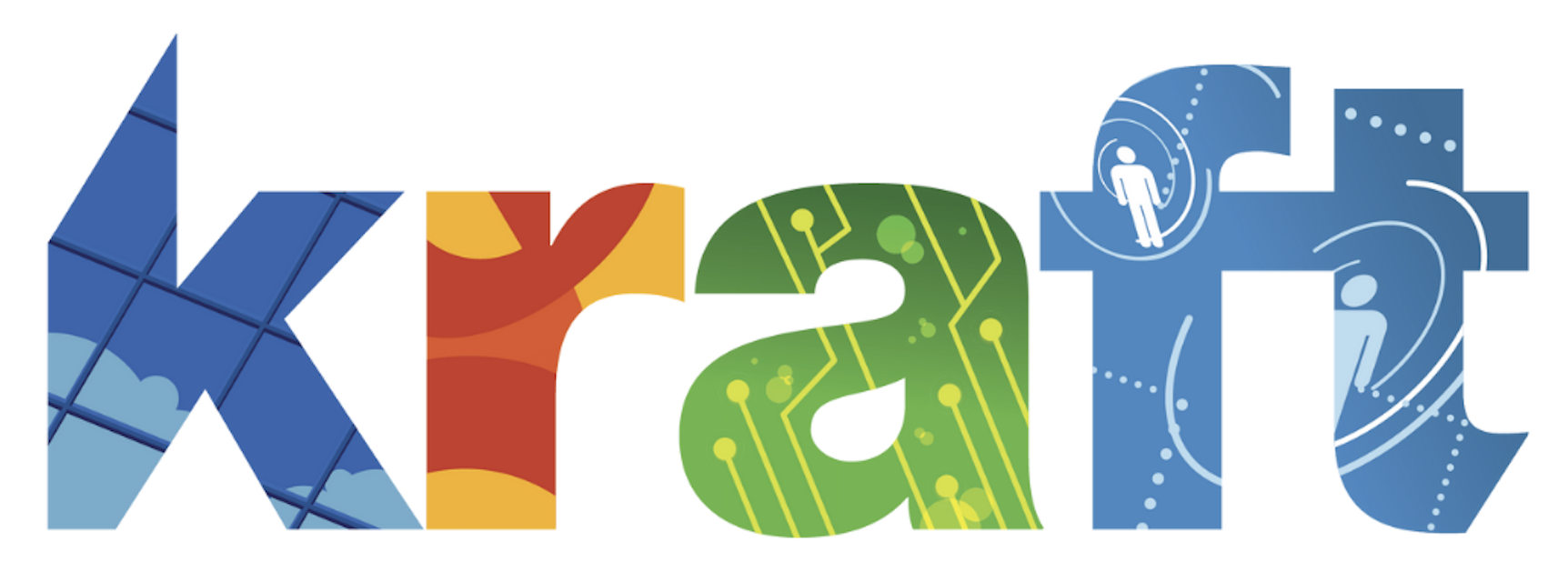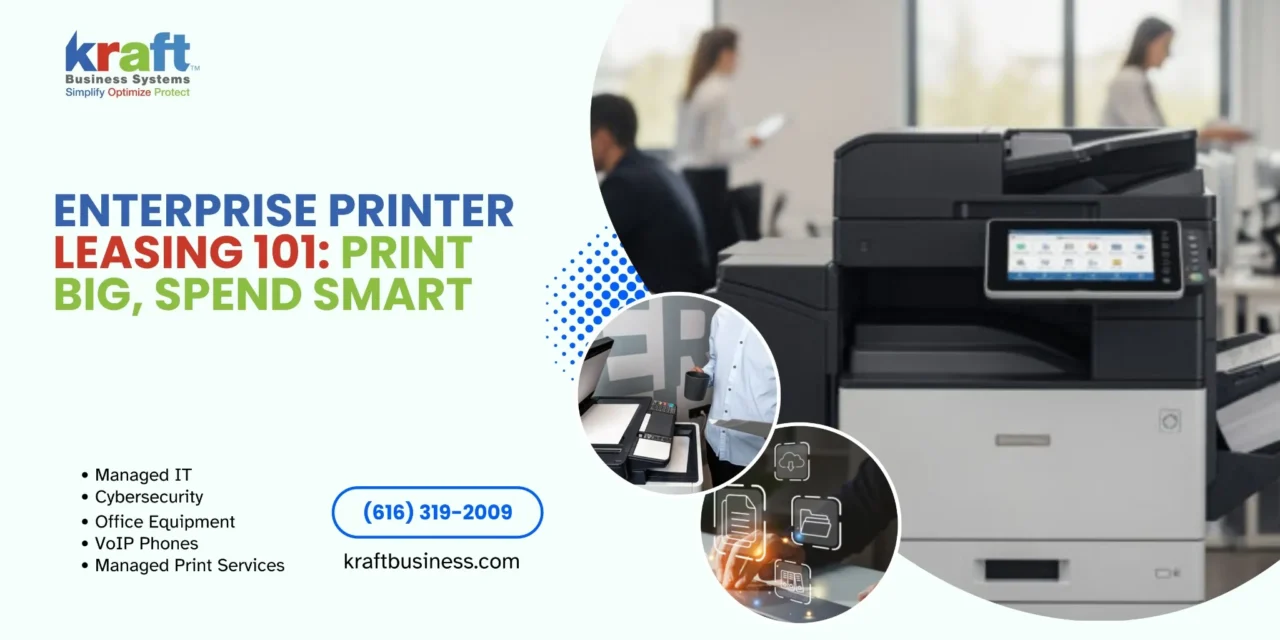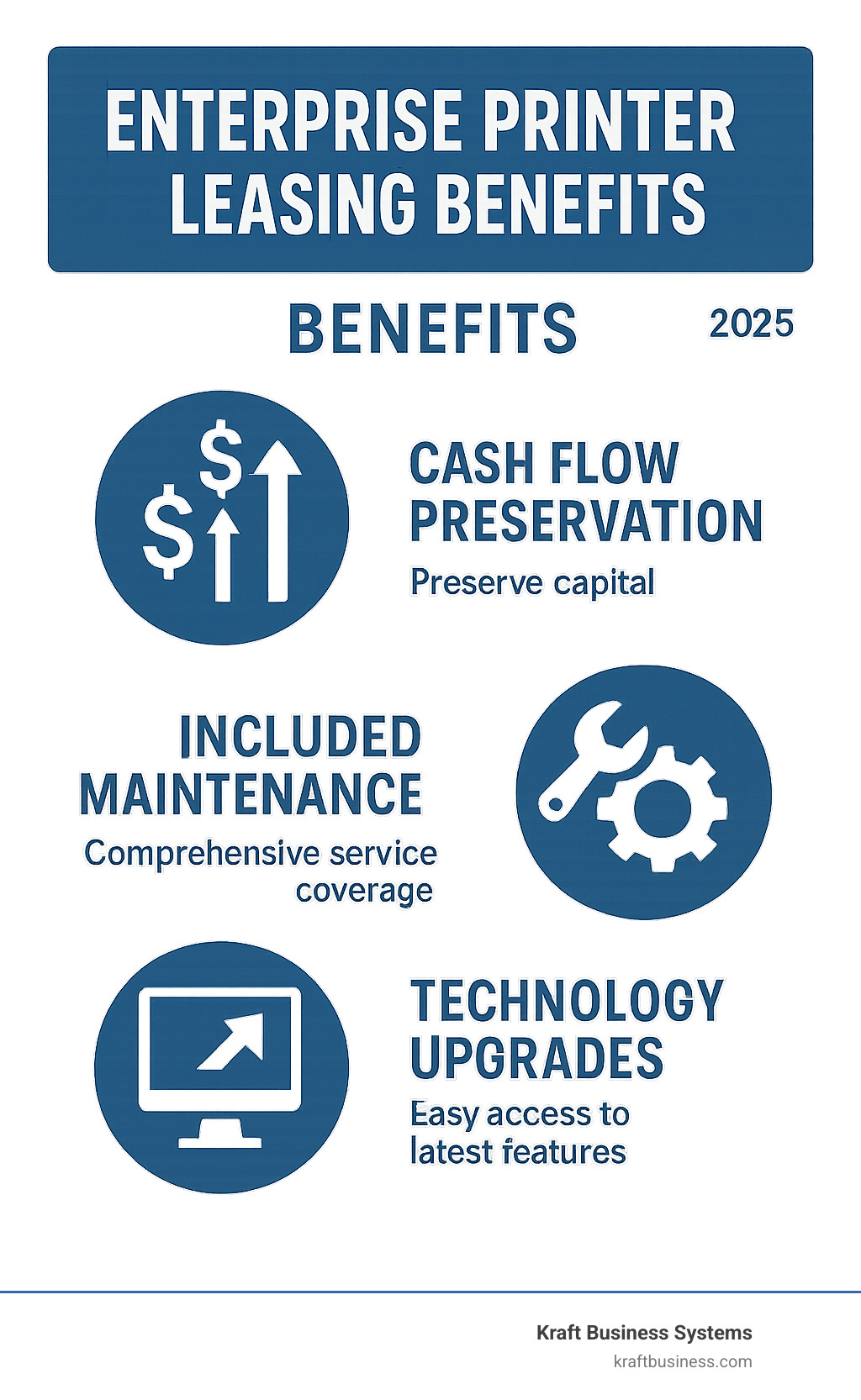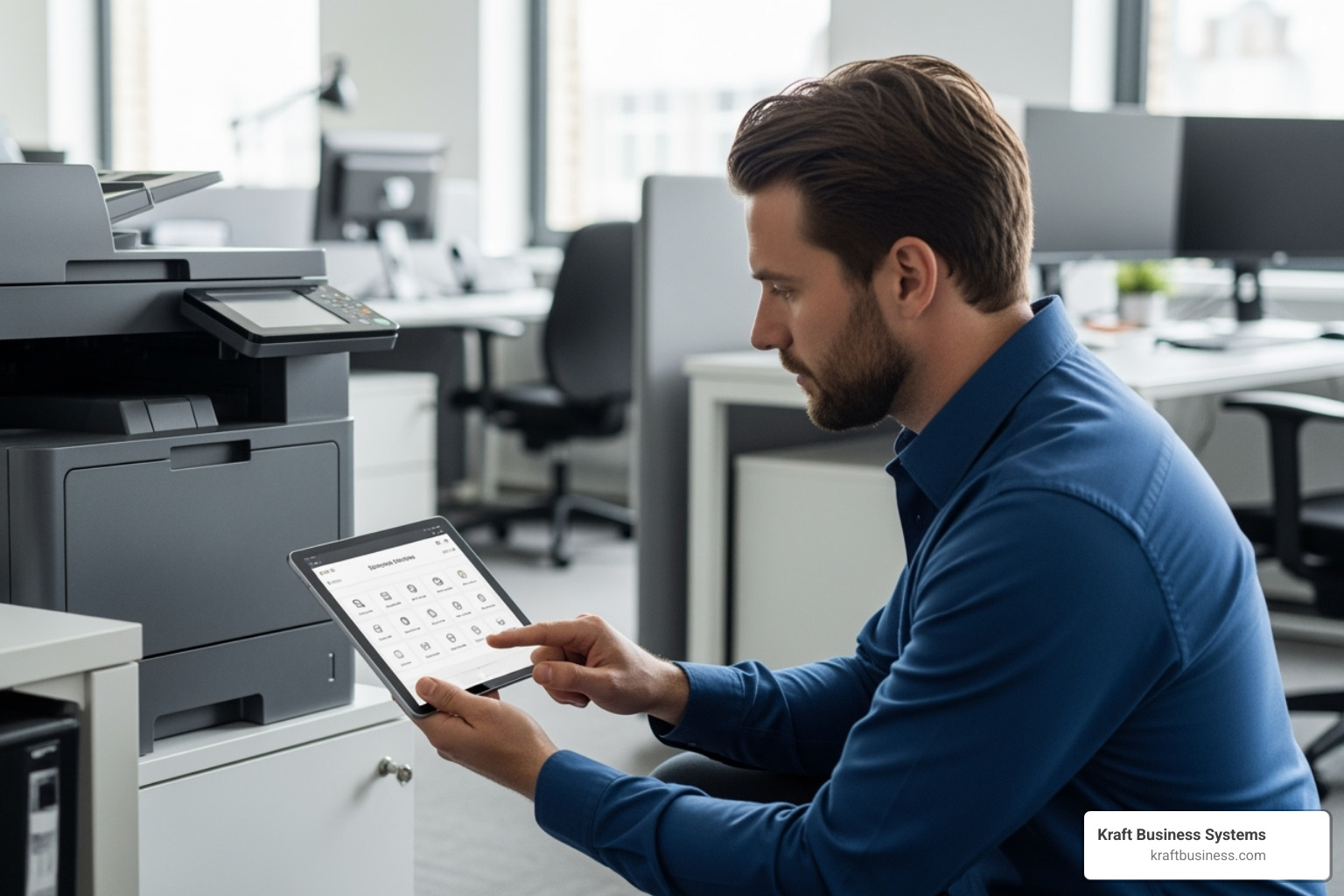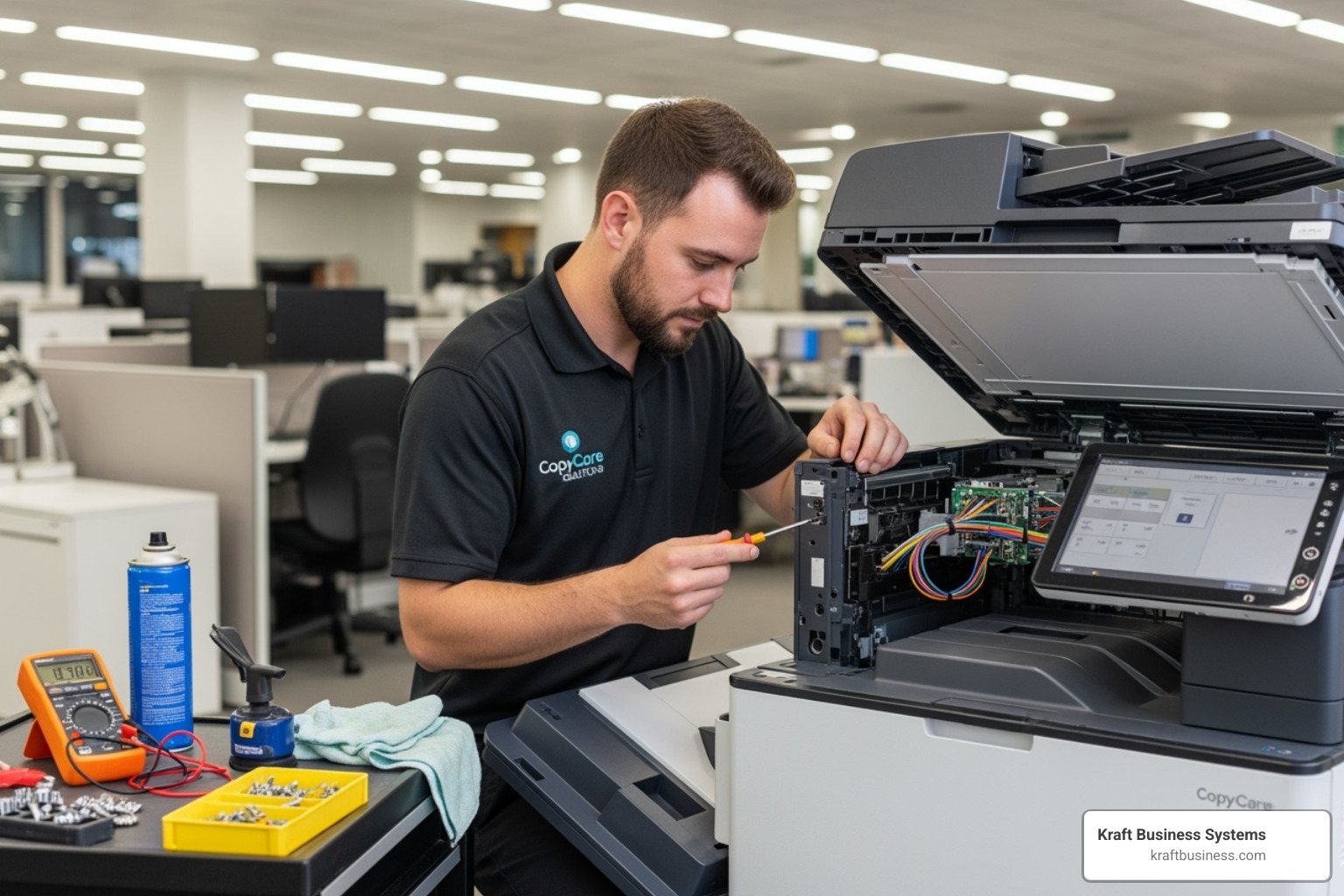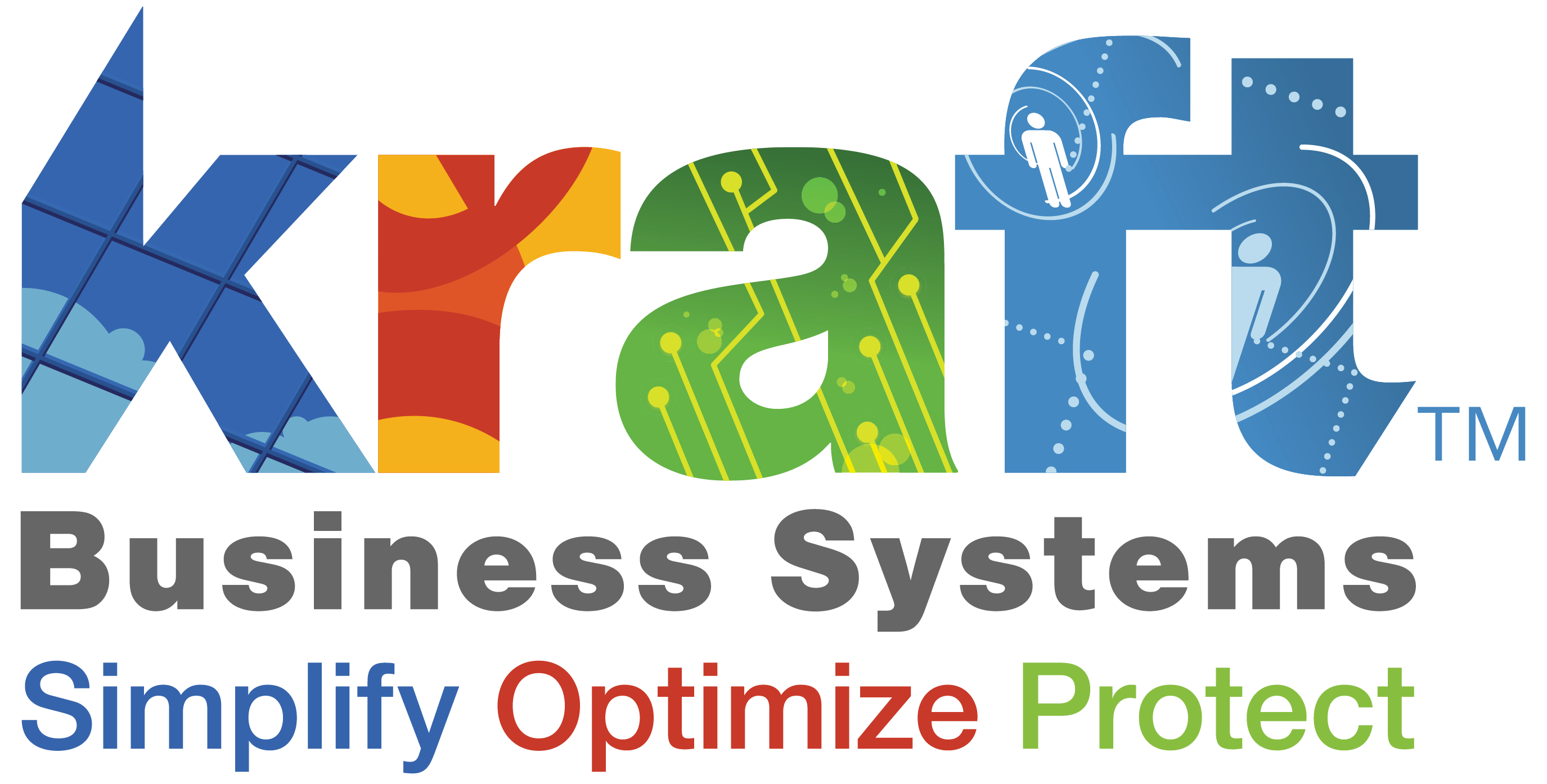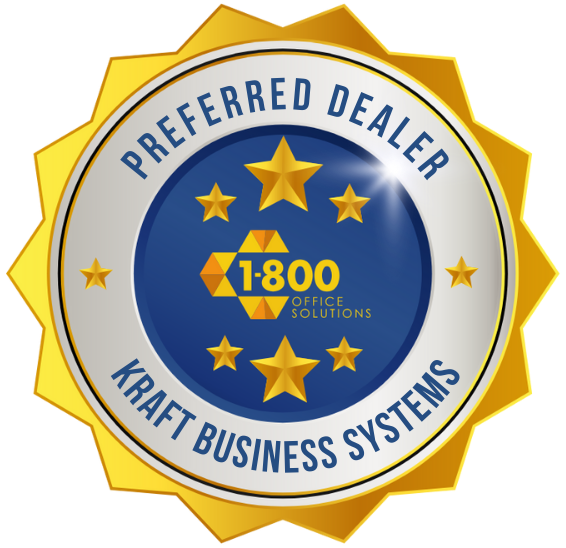Enterprise printer leasing offers a flexible, cost-effective way for large organizations to access the latest technology without a large capital investment. Instead of buying printers, businesses pay a monthly fee, preserving cash flow and simplifying budgets.
What is Enterprise Printer Leasing?
- A financial arrangement where businesses rent printers for a set period (typically 2-5 years)
- Fixed monthly payments with no large upfront costs
- Includes maintenance, support, and often supplies like toner
- Allows easy upgrades to newer technology at lease end
Key Benefits for Large Organizations:
- Cash Flow Preservation – Avoid tying up capital in depreciating assets
- Predictable Costs – Fixed monthly payments make budgeting easier
- Technology Access – Stay current with latest features without ownership commitment
- Simplified Operations – Bundled maintenance eliminates surprise repair bills
For businesses with outdated systems and tight IT budgets, leasing offers a path to modern document management. As one industry expert notes, “Leasing provides the flexibility to easily scale your printing capabilities up or down as your business needs change.”
A typical lease spans two to five years and includes service packages with support, toner replenishment, and predictable expenses.
Terms related to enterprise printer leasing:
The Strategic Advantage of Enterprise Printer Leasing
Managing printing for a large organization involves strategic decisions on budget, resources, and technology. Enterprise printer leasing offers key advantages over purchasing and differs from Managed Print Services (MPS).
What is Enterprise Printer Leasing?
Enterprise printer leasing is a long-term rental agreement for your printing equipment. Businesses pay a fixed monthly fee for two to five years to use advanced printers without owning them.
Buying a printer ties up capital in a depreciating asset. Leasing avoids this large upfront cost, preserving cash flow for business growth by paying for the use of the equipment, not ownership. At the end of the term, you can return the equipment or upgrade, offering excellent financial flexibility.
Core Benefits for Large Organizations
The benefits extend beyond cost savings to transform print management.
- Cash Flow Preservation: Leasing converts a large capital expenditure into a predictable monthly operating expense. This simplifies budgeting and frees up funds for growth.
- Technology Obsolescence Mitigation: Technology evolves quickly. Ownership can leave you with outdated equipment. Leasing allows you to upgrade to the latest models at the end of the term, ensuring access to efficient and secure technology.
- Scalability: As business needs change, you can easily scale your printing fleet up or down without being tied to existing equipment.
- Bundled Maintenance: Lease agreements typically include service packages covering maintenance, parts, labor, and automatic toner replenishment. This eliminates surprise repair bills and frees up your IT team from printer troubleshooting.
At Kraft Business Systems, we understand that managing IT infrastructure requires a holistic approach. That’s why our IT solutions complement your leasing strategy, ensuring your entire technology ecosystem works seamlessly together.
Leasing vs. Managed Print Services (MPS)
While related, leasing and MPS serve different, often complementary, purposes.
Traditional leasing focuses on equipment. It covers the use of printers and often includes basic maintenance, but the strategic management of the print environment remains your responsibility.
Managed Print Services (MPS) is a holistic approach. An MPS provider assesses and optimizes your entire print environment—including devices, workflows, and security—for maximum efficiency and cost-effectiveness. An MPS provider offers:
- Comprehensive Management: Proactive monitoring and support for all devices.
- Optimization: Streamlining workflows and implementing policies to cut costs.
- Security Monitoring: Protecting vulnerable network endpoints, crucial as 61% of organizations report print-related data breaches.
- Proactive Support: Remote and on-site support to minimize downtime.
The key difference is that leasing focuses on equipment, while MPS covers the entire print ecosystem. Modern agreements often bundle leasing with MPS, combining financial benefits with operational efficiency for a powerful solution.
The Financial Equation: Leasing vs. Buying
Choosing between leasing and buying a printer is a key financial decision that impacts your entire budget. It represents two different approaches to managing company funds.
Impact on Budget and Cash Flow
Understanding the difference between Capital Expenditure (CapEx) and Operating Expense (OpEx) is key.
- Purchasing (CapEx): Buying a printer is a Capital Expenditure. This large, upfront cost can strain cash flow and ties up funds in a depreciating asset.
- Leasing (OpEx): Enterprise printer leasing is an Operating Expense, a predictable monthly cost. This preserves cash flow for other business needs.
Here’s a comparison:
| Feature | Leasing a Printer | Buying a Printer |
|---|---|---|
| Upfront Cost | Low or none | High |
| Monthly Payments | Predictable, fixed (OpEx) | None (after purchase), but can have financing payments |
| Maintenance | Often included in lease/service agreement | Company’s responsibility, can be unpredictable |
| Technology Upgrades | Easy at lease end, built-in flexibility | Requires new purchase, risk of obsolescence |
| Cash Flow Impact | Preserves cash, predictable budgeting | Significant initial drain |
| Long-Term Cost | Potentially higher overall, but predictable | Potentially lower overall, but higher initial risk |
| Asset Ownership | No | Yes |
The beauty of leasing lies in its predictability. As one financial analyst put it, “Businesses that lease printers can spread out the cost over months or years, which reduces the initial financial burden.” This financial flexibility allows you to seize growth opportunities instead of tying up cash in office equipment.
Tax Implications and Long-Term Costs
From a tax perspective, it’s important to consult your accountant for your specific situation.
- Lease payments are usually fully deductible as a business expense each year, reducing your taxable income.
- When purchasing, you may qualify for the Section 179 deduction, allowing you to deduct the full cost in the year of purchase. However, this still requires the initial capital.
The Total Cost of Ownership (TCO) reveals the true financial picture.
- For leasing, TCO includes monthly payments plus potential extras like overage charges for exceeding print limits, hidden fees for administration or returns, and buyout costs if you choose to purchase the equipment at the end of the lease.
- For purchased equipment, TCO includes the initial price, ongoing supplies and maintenance, and eventual disposal costs. You also have to account for asset depreciation.
While leasing might have a higher total cost over many years, the benefits of flexibility, predictable budgeting, and included maintenance often make it the smarter business choice. You’re paying for peace of mind and current technology.
We invite you to explore our range of printers and copiers and discuss how our solutions can align with your financial strategy.
Key Factors to Evaluate in a Leasing Agreement
Once you decide to lease, success depends on understanding your needs and carefully evaluating the agreement. Here are the key factors to consider.
Assessing Your Organization’s Print Environment
Before looking at printers, assess your current print environment. This is critical for making a smart decision. Analyze the following:
- Print Volume: Review monthly page counts, including seasonal spikes, to avoid costly overage charges.
- User Needs: Consider departmental requirements, such as secure printing for HR or high-quality color for marketing.
- Security: Protect sensitive information, as “61% of organizations have reported at least one print-related data breach in the past year.”
- Printing Strategy: Decide between centralized multifunction devices or decentralized desktop printers.
Choosing the Right Hardware
With your needs defined, selecting hardware is easier. Focus on these requirements:
- Color vs. Black-and-White: Color is essential for marketing materials, while monochrome is more cost-effective for internal documents.
- Print Speed (PPM): Match the printer’s speed to your department’s daily volume to avoid bottlenecks.
- Model Type: Choose between smaller desktop printers for individuals or large, floor-standing multifunction printers (MFPs) for high-volume, shared use.
- Specialized Features: Look for productivity boosters like duplex (two-sided) printing, advanced scanning, and advanced security features.
What’s Included in the Fine Print?
Don’t just focus on hardware; the details in your enterprise printer leasing agreement are crucial. Examine these key areas:
- Service Level Agreement (SLA): This defines response times and uptime guarantees. A strong SLA ensures fast repairs, often promising next-business-day service.
- Maintenance Coverage: This should be comprehensive, including all parts and labor to prevent surprise bills. Look for preventative maintenance to minimize downtime.
- Automatic Toner Replenishment: This valuable feature monitors toner levels and ships new supplies automatically, preventing work stoppages.
- Support Services: Ensure the agreement includes remote diagnostics, on-site tech support, and software updates.
A comprehensive agreement typically includes the printer equipment itself, all parts and labor for repairs, on-site maintenance and technical support, automatic supply replenishment, preventative maintenance, software and driver updates, remote monitoring capabilities, and flexible end-of-term options.
A successful enterprise printer leasing experience depends on choosing the right provider and understanding your contract. A smooth partnership avoids costly headaches.
How to Choose the Right Leasing Provider
View your leasing provider as a long-term partner whose service quality will impact your operations. Look for these qualities:
- Reputation and Reviews: Choose providers with a proven track record and positive customer reviews from businesses like yours.
- Service Quality: Inquire about technician certification and response times, especially for emergencies.
- Support Network: If you have multiple locations, ensure the provider offers consistent, factory-authorized nationwide support.
- Flexibility: The provider should offer upgrade clauses to adapt to your changing needs.
- Transparency: Insist on clear, straightforward pricing and contract terms. A provider who is vague about costs is a red flag.
At Kraft Business Systems, our comprehensive approach includes robust managed cybersecurity services to protect your entire IT infrastructure.
Key Considerations for Your Enterprise Printer Leasing Agreement
Pay close attention to these contract details:
- Contract Length: Typically 2-5 years. Shorter terms offer more flexibility, while longer terms usually have lower monthly payments.
- Early Termination: Understand the penalties for breaking the lease before the term ends.
- Print Volume & Overage Fees: Ensure your monthly page allowance is realistic to avoid costly overage fees.
- End-of-Lease Options: Know your options to return, renew, or purchase the equipment when the lease expires.
- Insurance: Factor in any requirements to insure the leased equipment into your total cost.
Common Pitfalls to Avoid
Learning from common mistakes can save you significant headaches:
- Ignoring the fine print: Read the contract carefully to understand maintenance, upgrade policies, and all fees. Ask questions about anything unclear.
- Underestimating print volume: Analyze your actual usage to avoid consistent overage fees.
- Not planning for the future: Choose a flexible agreement that can adapt as your business grows or changes.
- Choosing the wrong equipment: Focus on long-term functionality and total cost, not just the lowest monthly payment.
- Neglecting security: Ensure your printer and provider offer robust security features to protect your network and data.
Frequently Asked Questions about Enterprise Printer Leasing
Here are answers to common questions about enterprise printer leasing to help you move forward with confidence.
Can I upgrade my printers during the lease term?
Yes, this is a key benefit of leasing. Most agreements include flexible upgrade paths, allowing you to access newer technology as your business needs change. You can often roll the balance of your current lease into a new one for updated equipment, ensuring you’re never stuck with obsolete technology. This is ideal for growing companies whose needs evolve over the contract term.
What is typically included in a service agreement with a lease?
A comprehensive service agreement typically includes all necessary maintenance, parts, and labor, eliminating surprise repair bills. It also usually covers automatic supply replenishment (like toner) and full technical support for software and connectivity issues. This frees up your IT team and makes operational costs predictable.
How does leasing impact my company’s taxes?
Lease payments are typically considered an operating expense (OpEx), allowing you to deduct the full amount from your taxable income each year. This contrasts with purchasing (a capital expense, or CapEx), where the asset is depreciated over time. While purchasing may offer tax advantages like the Section 179 deduction, leasing provides a predictable, straightforward deduction that can benefit cash flow. Always consult a tax professional to determine the best approach for your company’s financial situation.
Conclusion
In a fast-moving business world, enterprise printer leasing is a strategic decision that transforms resource management and future planning. It solves key business challenges by converting large capital investments into predictable monthly expenses and providing constant access to the latest, most secure technology. This approach preserves cash flow and eliminates the unpredictability of maintenance costs and equipment obsolescence.
The financial flexibility is a major advantage. Capital that would be tied up in depreciating assets can be redirected toward growth. Predictable monthly payments simplify budgeting, and comprehensive service agreements eliminate surprise repair costs.
The greatest value is the peace of mind from a strong partnership. With services like automatic supply replenishment, prompt support, and easy upgrades, your team can focus on core business activities, not printer issues.
Success depends on a thorough needs assessment and partnering with a provider invested in your success. At Kraft Business Systems, our expert team has decades of experience helping Michigan businesses steer modern IT challenges with confidence.
Ready to find how enterprise printer leasing can work for your organization? We’d love to sit down with you, understand your unique challenges, and craft a solution that makes sense for your budget and your goals. Contact us for a personalized leasing consultation and let’s start building a printing strategy that grows with your business.
